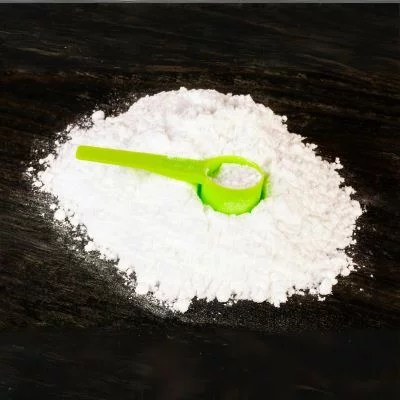Welcome, Super Achievers, to your ultimate guide to maximizing physical potential and shattering your fitness goals. Delve into our expert analysis on the Best Micronized Creatine, crafted to power your journey to the peak of athletic excellence and physical prowess.
Contents
Top 7 Best Micronized Creatine Monohydrate Products Review
Comparative Analysis of Competing Brands
Why Micronized Creatine?
Overview of Creatine Supplementation
Creatine, a naturally occurring compound, plays a pivotal role in the production of energy in muscle cells. Its supplementation has become a cornerstone in the regimen of athletes and fitness enthusiasts for its remarkable ability to boost muscle strength, increase lean body mass, and enhance overall exercise performance.
At the core of this phenomenon is creatine monohydrate, lauded for its efficacy and safety, as detailed in our extensive discussion on What is Creatine.
Importance of Micronized Form in Creatine Monohydrate

But not all creatine is created equal. Enter the world of micronized creatine monohydrate.
Micronization is a process that reduces the particle size of creatine, enhancing its solubility and absorption in the body. This translates to greater bioavailability, ensuring that your muscles receive more of this potent compound.
Why does this matter? The finer particles of micronized creatine dissolve more readily in liquids, reducing the gritty texture and potential digestive discomfort associated with regular creatine monohydrate. In essence, micronization elevates the already impressive profile of creatine monohydrate.
The Quest for the Best Micronized Creatine
Our mission at Super Achiever Club is not just to inform but to empower. The quest for the best micronized creatine is more than a pursuit of a quality supplement; it’s a journey towards optimizing our physical capabilities.
Factors like purity, particle size, and the absence of additives play a crucial role in determining the effectiveness of a micronized creatine product. Optimum Nutrition, a renowned name in the fitness industry, has set a benchmark with its micronized creatine offerings, promising not just enhanced solubility but also maximum muscle uptake.
This level of quality is essential in achieving the superlative results that our community members aspire to, be it in muscle building, athletic performance, or overall physical conditioning.
Understanding Creatine Monohydrate
What is Creatine Monohydrate?
Chemical Structure and Biological Role
Creatine monohydrate, a compound naturally synthesized in the human body, primarily in the liver, kidneys, and pancreas, is a combination of three amino acids: arginine, glycine, and methionine. Structurally, it is a crystalline powder that is water-soluble and stable in solution, making it an ideal candidate for supplementation.
At the molecular level, creatine plays a crucial role in the storage and transportation of energy within muscle cells. It achieves this by increasing the availability of adenosine triphosphate (ATP), the cell’s energy currency, enabling sustained muscular contraction and endurance during high-intensity activities.
Benefits in Muscle Growth and Performance
The supplementation of creatine monohydrate has been shown to have several benefits:
- Increased Muscle Mass: Creatine enhances water retention in muscles, leading to an immediate increase in muscle size.
- Enhanced Strength and Power: By boosting ATP production, creatine allows for more explosive power and strength during workouts.
- Improved Exercise Recovery: Creatine helps reduce muscle cell damage and inflammation following intense exercise.
- Cognitive Benefits: Emerging research suggests creatine may also have cognitive-enhancing properties.
For a detailed exploration of creatine’s effects, visit our comprehensive guide on What Does Creatine Do.
Creatine in Sports Nutrition
Historical and Current Use in Athletics
Creatine’s journey in sports nutrition began in the early 1990s, rapidly gaining popularity among athletes for its performance-enhancing capabilities. Its legal status, coupled with its effectiveness, has made it a staple in the supplement regimes of athletes across various disciplines, from bodybuilders to track athletes.
Scientific Evidence Supporting Performance Enhancement

A plethora of studies back the efficacy of creatine in sports nutrition. Key findings include:
- Increased Physical Performance: Studies show significant improvements in short-duration, high-intensity exercises.
- Muscle Endurance: Long-term creatine use has been linked to enhanced muscle endurance and total work done.
- Resistance to Fatigue: Creatine supplementation can delay the onset of muscular fatigue, allowing for longer training sessions.
For a deep dive into the scientific evidence, check out our article on Creatine Research Studies.
The Micronization Advantage
The Micronization Process
Technical Explanation of Micronizing Creatine
Micronization is a revolutionary process that transforms standard creatine monohydrate into a much finer powder. This is achieved through mechanical means, such as jet milling, which pulverizes creatine particles to a size significantly smaller than typical creatine powders. The result? Particles that are often less than 200 micrometers in diameter, compared to the average 500-700 micrometers of standard forms.
The smaller particle size greatly impacts the behavior of creatine in solution. Micronized creatine dissolves more completely and rapidly in liquids, which translates to enhanced absorption by the body.
Comparison with Standard Creatine Forms
When compared to standard creatine forms, micronized creatine stands out in several aspects:
- Solubility: Micronized creatine boasts superior solubility, meaning it mixes more easily with liquids without leaving a gritty residue.
- Digestive Comfort: Due to its finer texture, it’s less likely to cause gastrointestinal discomfort, a common issue with coarser creatine powders.
- Rapid Absorption: The smaller particles are believed to be absorbed more quickly by the body, leading to faster and more efficient utilization.
Discover more about the differences in creatine forms at Creatine HCL vs. Monohydrate.

Benefits of Micronized Creatine
Enhanced Solubility and Absorption
The micronization of creatine not only improves its solubility in liquids but also optimizes its absorption in the digestive system. This means that more creatine is available to your muscles, enhancing the overall effectiveness of the supplement.
Implications for Athletic Performance and Recovery
The benefits of micronized creatine extend into various aspects of athletic performance and recovery:

- Immediate Energy Supply: Enhanced absorption means quicker availability of creatine for ATP synthesis, vital for short bursts of intense activity.
- Improved Muscle Recovery: Efficient absorption also translates to better muscle recovery post-workout, reducing muscle soreness and fatigue.
- Consistent Performance: The improved solubility ensures a consistent dosage with each serving, contributing to steady performance enhancements over time.
Learn more about optimizing athletic performance with creatine at Best Creatine for Muscle Growth.
For a detailed comparison, check out our guide on Best Creatine Supplements.
Scientific Studies on Product Efficacy
Clinical studies bolster the claims of effectiveness. Research indicates that micronized creatine, like that offered by Optimum Nutrition, leads to:
- Rapid Absorption: Faster uptake into the muscles compared to non-micronized forms.
- Enhanced Performance: Significant improvements in strength and power output.
- Better Muscle Recovery: Reduced muscle soreness and faster recovery post-exercise.
For more on the scientific perspective, explore our article on Creatine Research Studies.
Optimal Use of Micronized Creatine
Supplementation Protocols
Recommended Dosage and Timing
When it comes to micronized creatine supplementation, precision in dosage and timing is key:
- Standard Dosage: The widely recommended dosage is 5 grams per day. This can be adjusted based on individual body weight and fitness goals.
- Timing: Creatine can be taken pre or post-workout. Some studies suggest that post-workout is slightly more effective, especially when combined with carbohydrates and protein.
- Consistency: Regular daily intake is crucial for maintaining elevated creatine levels in muscles.
For more on creatine timing, visit Creatine Before or After Workout.
Cycling and Long-term Use Considerations
- Cycling: While not mandatory, some users prefer to cycle creatine (e.g., 8 weeks on, 4 weeks off) to maintain its effectiveness.
- Long-term Use: Research indicates that long-term creatine supplementation is safe, but it’s always wise to consult a healthcare professional.
Explore more about creatine cycling at Creatine Loading Phase.

Synergies and Interactions
Combining with Other Supplements
Creatine’s effectiveness can be enhanced when used in conjunction with other supplements:
- Protein: Combining creatine with protein may enhance muscle recovery and growth.
- Carbohydrates: Taking creatine with carbs can improve its uptake into muscles, due to increased insulin levels.
- Beta-Alanine: This combo can further enhance performance in high-intensity activities.
Check out our guide on Best Pre-Workout with Creatine.
Dietary Considerations and Hydration
- Diet: A balanced diet rich in proteins, healthy fats, and carbohydrates supports the effectiveness of creatine.
- Hydration: Increased water intake is essential when on creatine, as it may increase water retention in muscles.
- Avoid Caffeine: Some studies suggest that caffeine might interfere with creatine’s effectiveness, although this is still debated.
For dietary tips, read What Foods Have Creatine.
Safety and Side Effects
Understanding Potential Side Effects
Common Concerns and Misconceptions
Creatine, despite being one of the most researched supplements in sports nutrition, is often shrouded in myths and misconceptions. Common concerns include:
- Kidney and Liver Damage: A myth largely debunked by science, as no direct link has been established between creatine supplementation and kidney or liver damage in healthy individuals.
- Dehydration and Cramps: Contrary to popular belief, creatine does not cause dehydration or cramping. In fact, it can help retain water within muscle cells.
- Gastrointestinal Distress: While some individuals may experience this, it’s often due to improper dosing or consuming low-quality creatine products.
For a factual breakdown of these concerns, explore Is Creatine Safe.
Real vs. Perceived Risks
- Weight Gain: Creatine can lead to weight gain, but it’s usually due to increased muscle mass and water retention, not fat.
- Hair Loss: There is minimal evidence suggesting a link between creatine and hair loss. This concern is largely overblown and unsubstantiated.
Understanding these aspects is crucial for informed supplementation. For more, visit Does Creatine Cause Hair Loss.
Navigating the Safety Landscape
Guidelines for Safe Use
To ensure safe use of creatine, consider the following guidelines:

- Quality Matters: Opt for high-quality, well-reviewed creatine products to minimize risks.
- Follow Recommended Dosage: Adhering to the recommended dosage (typically 3-5 grams daily) can prevent most side effects.
- Stay Hydrated: Increased water intake is vital when supplementing with creatine.
For detailed dosing guidelines, check out How Much Creatine Should I Take.
Special Considerations for Different Populations
- Teens: While creatine is generally safe, teens should approach supplementation cautiously and preferably under supervision.
- Pregnant or Nursing Women: There is limited research in this demographic, so it’s advisable to avoid creatine during pregnancy and nursing.
- Individuals with Pre-Existing Conditions: Those with kidney or liver issues should consult a healthcare professional before starting creatine.
Read more about creatine for different populations at Best Creatine for Women and Best Creatine for Men.
🌟 In Conclusion: Creatine is a safe and effective supplement when used properly. Understanding its potential side effects, busting common myths, and adhering to safe usage guidelines can help maximize its benefits while minimizing risks. As always, personal health conditions and goals should guide your supplementation choices.

Personal Opinion & Experiences
I personally recommend micronized creatine over regular monohydrate because I find it to be mixed and swallowed more easily. But always keep in mind to stick to the basics and look for the highest quality suppliers of course.
– Felix Hesse (Founder of SAC)
Finding the Best Creatine for You
So now you know everything about the best micronized creatine. But have you found the best creatine to fit your personal needs already? This is not an easy task to do. And that’s why we created specific guides for different forms & all your needs:
| Best Creatine Supplement | Best Creatine for Men |
| Best Creatine Brand | Best Creatine for Women |
| Best Creatine Monohydrate (Powder) | Best Creatine for Muscle Growth & Bodybuilding |
| Best Creatine Powder | Best Creatine for Teens |
| Best Creatine Pills & Capsules | Best Creatine for Bulking & Weight Gain |
| Best Creatine Gummies | Best Creatine for Athletes |
| Best Creatine HCL | Best Creatine for Beginners |
| Best Creatine Creapure | Best Creatine for Weight Loss & Cutting |
| Best Vegan Creatine | Best Creatine for Glute Growth |
| Best Micronized Creatine | Best Creatine for Older Adults |
| Best Pre-Workout with Creatine | Where to Buy Creatine |
The Science Behind It
Whenever possible we base our articles on scientific research & studies on Creatine.
Want to know more about it? Visit our dedicated page:

🔗 For more insights on creatine and its various forms, explore our comprehensive guides:
- Creatine Monohydrate vs. HCL
- How to Take Creatine
- best Creatine for Women | best Creatine for Men
- Creatine Weight Gain
- Best Creatine Supplements
- Creatine Benefits










